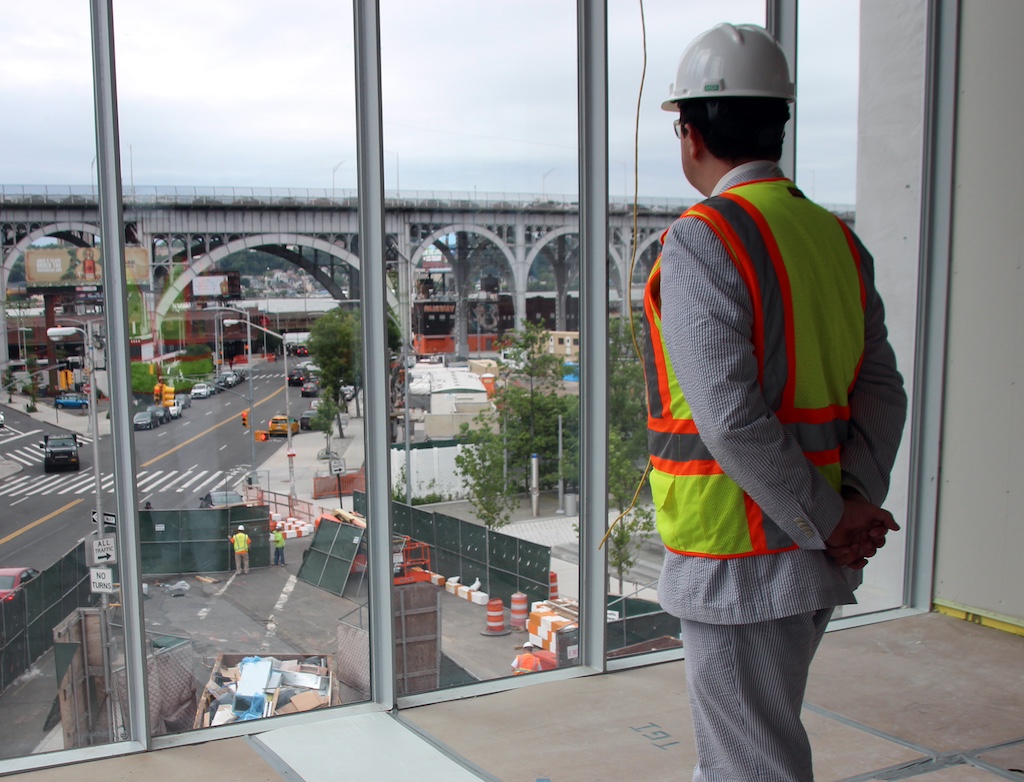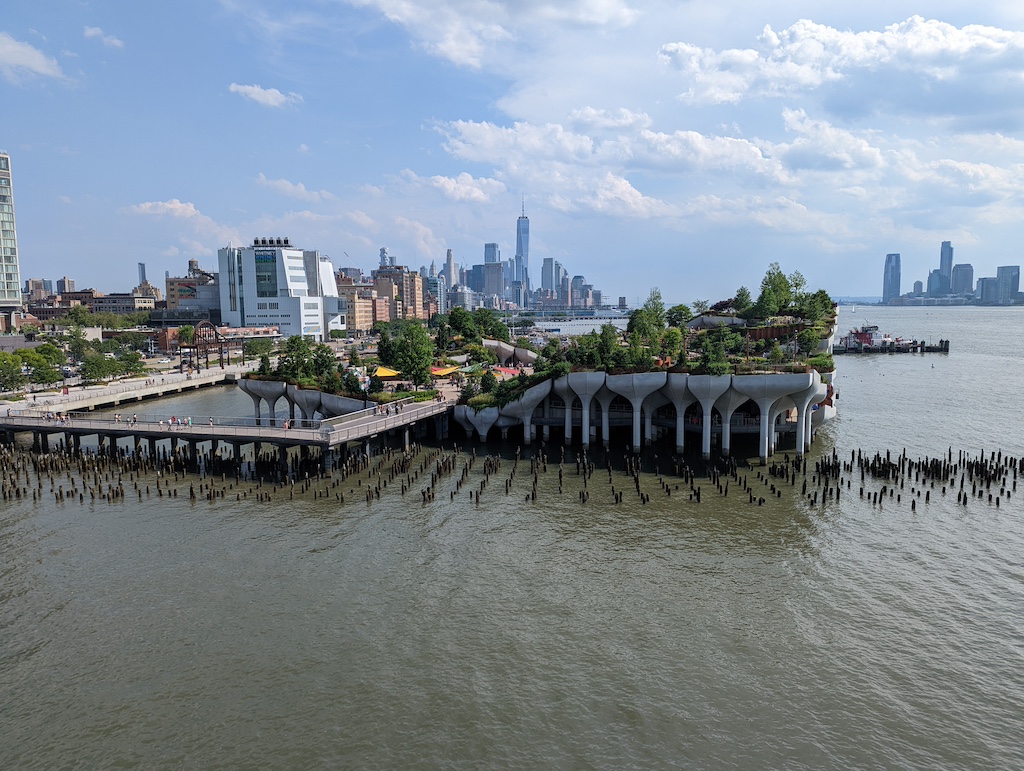The Only Thing Holding Architects Back Is Themselves
When architects and designers understand themselves as workers in need of unions, they can take advantage of political breakthroughs like Zohran Mamdani’s recent mayoral win to use their skills to advance a vision of the built environment for the many.

A robust social-housing program that is built with the values of architectural labor would mean a higher quality built environment for all. (Christina Horsten / picture alliance via Getty Images)
By all measures Zohran Mamdani’s victory was historic. Coming from virtually nowhere, the Queens assemblymember confronted the status quo and painted an inspiring image of what New York City can be. As an architect, I’m thrilled by the opportunities this presents for my industry — to build big for the public good. But current attitudes and self-conceptions about our discipline, tying us more to the ultrawealthy than the working-class majority, risk sidelining us during a moment of historic transformation. Now is a chance for architects to join this movement.
I first heard about Mamdani’s campaign when he called into New York Public Radio’s The Brian Lehrer Show in the fall of 2024 as an unannounced guest. Lehrer had been hosting a series called “100 Years of 100 Things,” and that week’s episode was on American socialism. Mamdani, a relatively unknown assemblyman at the time, took the opportunity to advocate for democratic socialism and launch his campaign.
In the conversation, Mamdani did not advocate for socialism from an ideological standpoint but from one based on results. Noting that he is “always ready to talk about the history of socialism,” Mamdani shared the example of “sewer socialism” in Wisconsin in the early twentieth century. For Mamdani’s platform, which is built on affordability, the precedent was powerful for focusing on improving people’s material lives: “You had socialist mayors who went on to build public health infrastructure, publicly owned power systems, improving workplace conditions, expanding education, truly putting the needs of the working class at the center of city government.” Much of it wasn’t flashy, but these were the real issues affecting working people’s ability to live good lives in the city.
This was just the beginning of the campaign, but it gives us insight into what Mamdani will try to achieve in terms of improving the built environment of New York City: traffic- and fare-free bus lanes, free quality public childcare centers, a pilot project of city-run grocery stores, a rent freeze for rent-stabilized apartments, and a plan to build hundreds of thousands of new apartments. What connects all of these ideas is not just that they focus on affordability but that they run through the physical space of the city.
For Mamdani, making the city work means transforming its physical composition to serve more than just billionaires who want their multimillion-dollar brownstones renovated; it means creating a well-functioning public space that everyone has a right to. Architects will have a key role to play in crafting such spaces.
The reaction in the architecture community to Mamdani’s election, however, has been mixed. The American Institute of Architects released a tepid statement of approval, and others in private practice such as WXY Studio’s Claire Weisz, who noted, “The most engaging and innovative approaches come from interagency and public /private collaboration.” Yet many architects see Mamdani’s plans as a threat. Accustomed to chasing wealthy clients for meager commissions, the talk of capital flight makes many anxious. Archinect, an architecture publication, posted several of the implications of Mamdani’s proposals to help architects understand how these policies would affect the profession; the majority of the comments on this post saw these proposals as an existential threat to the profession.

The near future will be “big government,” many said — and with big government will inevitably come the death of design. “It will be a race to the bottom fighting for government contracts,” commented one user. Another said, “socialism mixed with bigotry toward certain minorities never built great cities.”
Comments like this are based on misinformation and unfamiliarity with the development process in New York City; even Mamdani understands that building new housing requires a robust partnership between the public and private sectors. Though the long-term goal might be a larger role for the government in housing, Mamdani’s team wants “the private market to play a significant role in the creation of new housing.” Private sector development must be tapped into in order to supply such ambitious housing goals.
But those comments of support rely on a hope that the increased pipeline of building projects will automatically translate to an improvement of the architectural profession. Even if this were true, there’s no guarantee that an increase in profits will result in gains for workers or better design. An embrace of the small but growing unionization effort could further both. Mamdani has sought strong alliances with labor and emphasized the crucial role that unions play in fighting income inequality. Here the architecture industry has an opportunity to not simply wait for work to come in but, through organizing, help shape the process.
Currently, architects have one of the lowest union density rates of any profession. The reasons for this are complicated, examined in my book The Labor of Architecture: Creativity, Design, and the Building of a New Class Consciousness. The work began when my colleagues and I formed the only private sector architecture union in the United States, providing a model for a different kind of consciousness built on our labor, not the praise of critics or the patronage of wealthy clients.
But why did this take so long? At a moment when other professions and other design fields are seeing unionization efforts, architects cling stubbornly to myths like that of the low-paid creative genius. As I explore in the book, this has long been the case since Benjamin Latrobe, often called the “first architect” in the United States, arrived from England in 1796.
We’ve been stuck with this identity since, with creative values developed in school that become exploited in workplaces and networking events with future oligarchic clients. Most students, including the ones I teach, graduate with an idealistic hope that architecture and design can be a force for positive change in the world. Unfortunately, this idealism is quickly crushed by reality, with young designers laboring late into the night for little pay wondering why they are spending so much time designing custom doorknobs or dull corporate bathroom fixtures.
With a mayor that seeks strong alliances with labor and the working class, architects have a chance to push both the industry and the city toward a more inclusive reality. These designers can take lessons from the grassroots nature of Mamdani’s campaign — one that had an unprecedented number of volunteers knock on one million doors. Facing millions of dollars of spending by opponents, the campaign was propelled across the finish line by thousands of individual acts of door-knocking. It wasn’t well-trained political consultants but everyday people who made this victory a reality. Architects should organize themselves similarly.
One of the most ambitious parts of Mamdani’s plan is his housing policy: “Zohran will triple the City’s production of publicly subsidized, permanently affordable, union-built, rent-stabilized homes, constructing 200,000 new units over the next 10 years.” We should expand the vision to include not just union construction but union design. While there are only a handful of unionized architecture offices, our goal should be to have all public work meet the contractual standards of Bernheimer Architecture (BA) Union’s collective bargaining agreement.
When design is more strongly influenced by workers, not just owners, it results in better work. This has been the case at Bernheimer Architecture, where the introduction of a union created a better structure to reflect the voices and values of workers in both the workplace and the design process. Through bargaining, workers were able to identify a clearer structure for roles and responsibilities that reflected how they actually work, not how management thinks they work.
Recently, the AFL-CIO Housing Investment Trust sought the services of Bernheimer Architecture not just because of its strong track record in affordable housing but specifically because of its union. Partnerships like this are a glimpse into what an expanded unionization effort could do with the upcoming administration. If the Mamdani administration prioritized work that included union-level contracts for designers, the work would better reflect the needs of working people, since it would be created by offices that themselves support the needs of their workers.
Beyond the important but modest proposals of the Mamdani campaign, architects could begin to push for more robust forms of socialized design. Through Architectural Workers United (AWU), we have begun conversations about new ideas for building housing. At a recent event with New York state assemblywoman Emily Gallagher, workers from BA Union joined community members to help envision a new approach to housing. Rather than workshops run solely by partners or upper management, workers joined to help residents envision a bolder kind of state-sponsored housing. Proposed legislation is in its early phases, but by leveraging workers movements like AWU, the architecture industry could have a greater say in shaping the final outcome.

This is the goal of my book and the work of AWU: help designers to understand themselves as workers, and with this new understanding, act on their collective power to help shape the built environment to meet the needs of the many, not the few. This starts with organizing more architecture offices to build strong union locals. While organizing was slow after the 2024 election, workers in the industry are increasingly ready to change the place they have the most influence: their office.
With a strong architectural union, architectural workers could push for legislation that represents the needs of not just community members, builders, and other stakeholders but designers too. This is not only to achieve fair pay and working conditions but also to bring the best quality design to those who need it most.
Currently, developers and clients determine what is valuable in the design process. Typically, unless there is an unlimited budget, what is important to designers, such as aesthetics or high-quality sustainable materials, are the first things to go when budgets get tight. A robust social-housing program that is built with the values of architectural labor would mean a higher quality built environment for all.
Without this, architects risk a stagnating profession dependent on the whims of the wealthy. Real strength lies in numbers; will architects join and take advantage of the moment?